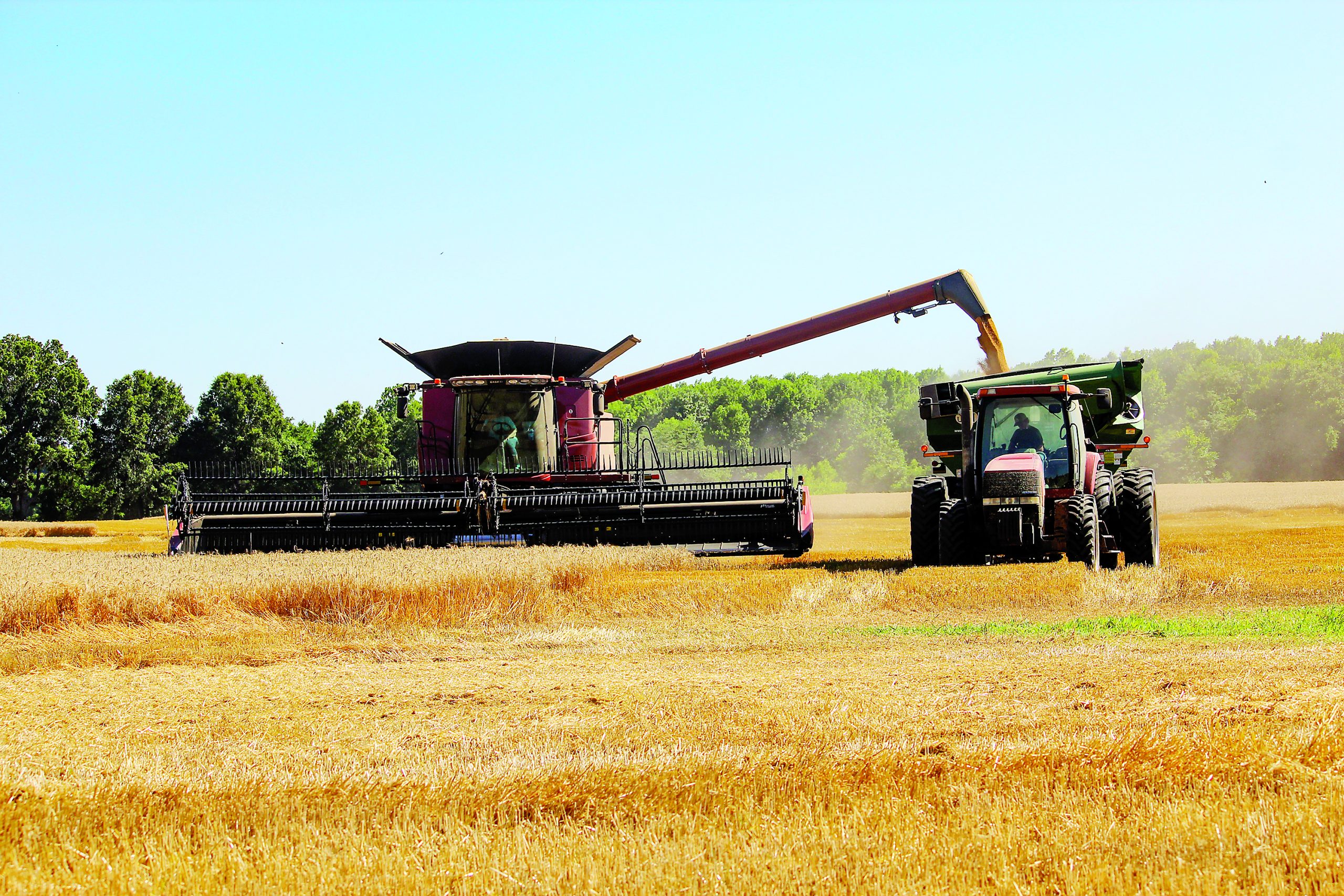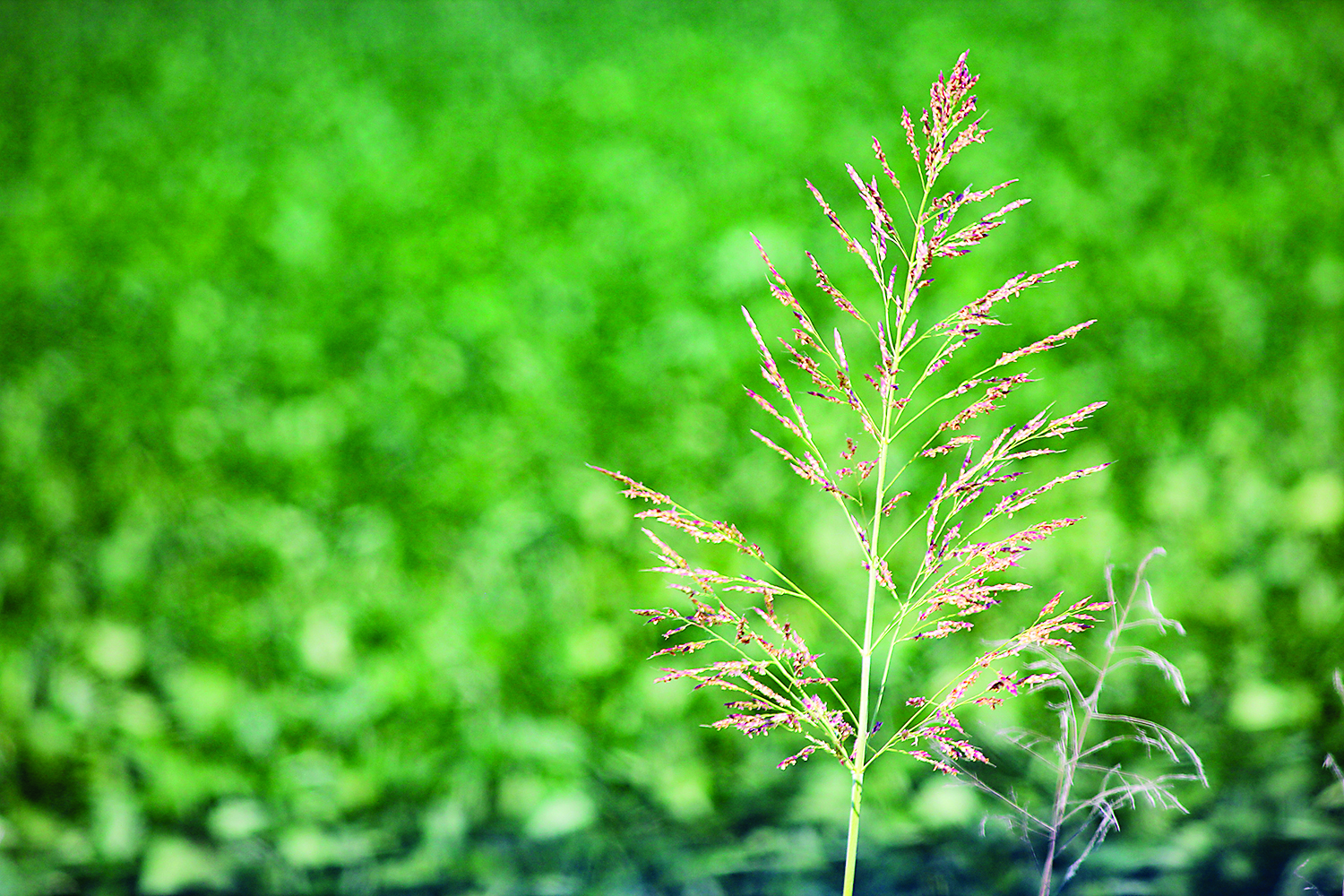Shaking Hands with Nature

"There are simply not many natural things as beautiful as open cotton."
A drive across Haywood County provides an opportunity to simply see nature at its best. Spring offers the beautiful scenes of cattle and frolicking calves grazing lush pasture. In early summer, beautiful waves of golden wheat roll with the wind, and cornfields on both sides of the road provide a sense of traveling through a green corridor. In autumn, the county’s topography blesses us with rolling terraces of white open cotton ready to be harvested. There are simply not many natural things as beautiful as open cotton. This is Haywood County at its best!
United States Department of Agriculture (USDA) records indicate Haywood County
has 341,760 acres. Fifty-nine percent (200,715) of those acres is cropland. As a university agriculture instructor, I am fairly sure this identifies the community as an agricultural county. Having served the county as its agriculture agent for 31 years, I cannot count how many times the following questions were asked concerning Haywood County agriculture: How many farms? How large are the farms? How many farmers? What’s grown? Now, you have to understand why these questions were asked a lot in my career, I predate Google!
The Agriculture Census reports there are 361 farms in the county with the aver- age size farm size being 556 acres. There are 582 farmers in the county. Contrary to the popular belief that most farms are industrial operations, 94 percent of the farms in the county are categorized as family owned. Sixty-two percent of the county’s farmers are between ages 35-64, while 32 percent are 65 and older. Sixty-eight percent of farmers are males. Another interest- ing statistic regarding county farmers is that 31 percent are classified as new or beginning farmers.
Haywood County has 36 farms recognized by Middle Tennessee State University as Century Farms.
According to University of Tennessee economists, Haywood County’s agricultural output is $277.9 million. Those economists also reported that the county has 901 persons directly employed as agricultural workers. Based upon 2021 USDA certified acres, the county’s cropping profile and state rankings are as follows: cotton 52,829 acres (1st), soybean 76,010 (5th), wheat 12,533 acres (7th), corn 34,765 acres (9th), and grain sorghum 1,614 acres (2nd). Due to such a large acreage of grain and cotton, agriculturally Hay- wood is considered a row-crop county.
Historically, cotton has been king of agricultural commodities produced in the county. USDA records suggest cotton was first planted in the county in 1828 (No, I was not the county agent back then). In 1992, the county produced 140,745 bales of cotton on 114,589 acres of land. According to the 2017 Census of Agriculture, the county produced 150,817 bales on 55,640 acres and ranked 39th nationally regarding production. As one can see, county farmers are producing more cotton on less acreage.
Although the county ranks number 1 in the state regarding cotton production, most of the county’s cropland is utilized for soybean production. In 1992, the county cropland utilized for soybean production was 36,048 acres, whereas in 2017 the acreage for soybeans had grown to 80,212. Obviously, due to prices, marketing dynamics, and production input costs, soybeans are the largest crop grown.
Regarding horticultural production, the county has one of the region’s largest family owned greenhouse operation. It also has small scale vegetable producers who market their products in Brownsville and at area farmer markets. Although the number is small, there are a few hobby beekeepers.
I cannot count the number of times people comment about the large numberof cattle produced in the county. However, despite the appearance of cattle farms on Hwy 70E and 19W, the county ranks 92nd in the state regarding beef cattle production. According to the 2017 Census of Agriculture, there are only 2,638 head of cattle in the county. The type of cattle farms are classified as cow-calf operations. These operations consist of a herd of brood cows managed to produce calves that are later sold as feeder calves weighing 300-500 pounds. As for horses, according to the Census of Agriculture, there are only 312.
Haywood County has a rich agricultural history. The county has 36 farms recog- nized by Middle Tennessee State University as Century Farms. Also contributing to the county’s agricultural legacy is the “Fletcher Equipment, Brownsville, Tennessee” chrome plate attached to an International Tractor at the Smithsonian Agricultural Exhibit. I saw it at a USDA Enterprise Community conference in Washington, D.C., with former County Mayor Franklin Smith. As Haywood County transforms from row crop farming area to suburbanized industrial, it’s possible agriculture will be relegated to fruit and vegetable operations, which will supply farmers’ markets and grocers with locally grown produce. The vast cotton, soybean, corn, and wheat fields of summer and fall scenes are likely to one day be memories of days gone by.







